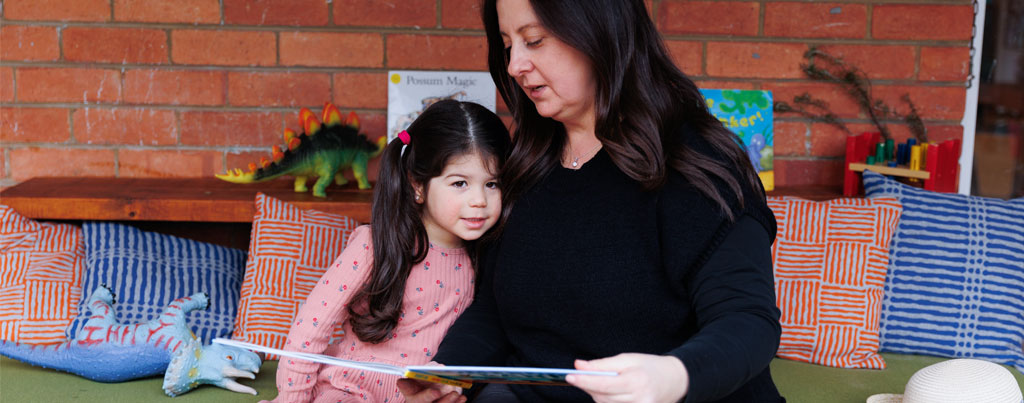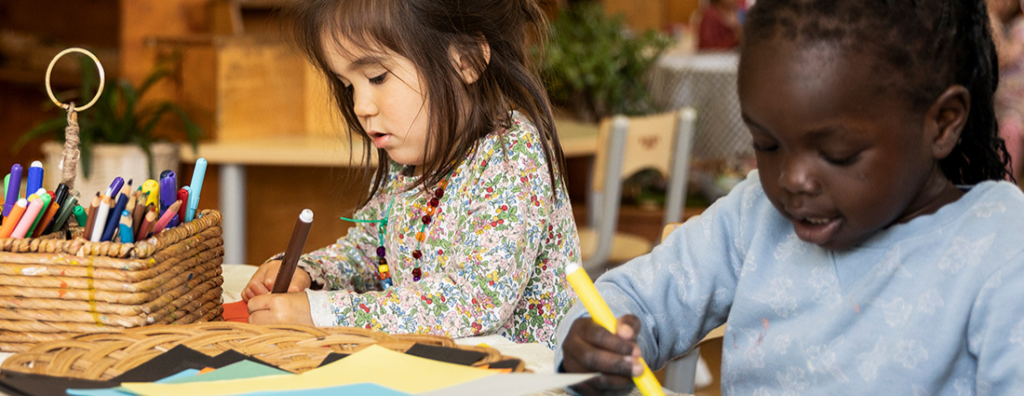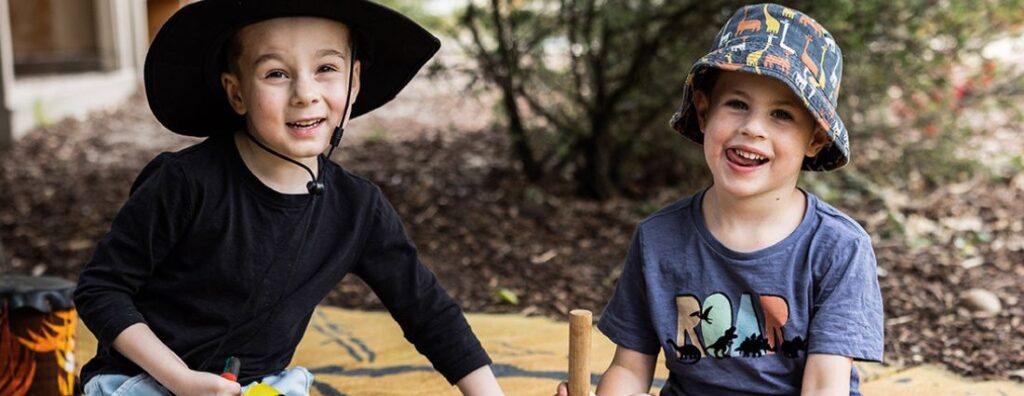In today’s ever-changing world, the skills children need to thrive go beyond traditional literacy and numeracy. STEM integrates Science, Technology, Engineering, and Mathematics to inspire curiosity, creativity, and critical thinking.
While often associated with older students, research highlights the profound benefits of introducing these concepts during formative years of early childhood.
Early childhood is a time of rapid brain development, where foundational skills are built through play, exploration, and discovery. By weaving STEM into early learning environments, we empower children to ask questions, experiment with ideas, and make sense of the world around them.
But what does STEM in education actually look like for a preschooler? Let’s explore how these powerful areas of learning are introduced in age-appropriate ways, and why that matters so much for your child’s future.
What is STEM education in early childhood?
STEM education in early childhood refers to playful, inquiry-based learning experiences that incorporate science, technology, engineering, and mathematics. Unlike formal instruction, early childhood STEM doesn’t involve solving equations or coding software (at least not yet!). Instead, it’s about laying the groundwork for thinking like a scientist or engineer; asking “why,” making predictions, testing ideas, and solving problems.
In early learning settings, STEM is often integrated into everyday activities. Whether building a tower of blocks, observing a caterpillar’s transformation, or measuring ingredients in a recipe, children are naturally engaging in STEM thinking. Each component contributes something unique:
- Science sparks curiosity about nature and physical phenomena.
- Technology introduces tools and digital literacy.
- Engineering encourages design, construction, and problem-solving.
- Mathematics develops pattern recognition, measurement, and logical reasoning.
The core components of STEM
Let’s take a closer look at each part of the STEM puzzle and why they matter in early learning.
Science
Young children are natural scientists. They observe, question, and experiment without prompting. Science in early childhood builds on this instinct by encouraging children to explore the world through their senses. Activities might include mixing colours, watching what floats or sinks, or growing a plant. These experiences teach cause and effect, observation skills, and an understanding of natural systems.
Technology
In early childhood, technology goes far beyond screens. It includes using magnifying glasses, digital thermometers, or even simple tools like rulers. Introducing technology in thoughtful, age-appropriate ways helps children become comfortable with problem-solving tools and digital literacy—skills they’ll rely on for years to come.
Engineering
Engineering encourages children to design and build. Whether it’s constructing a bridge from blocks or figuring out how to make a paper airplane fly farther, early engineering fosters innovation, creativity, and persistence. These hands-on tasks also support spatial awareness and fine motor skills.
Mathematics
Early numeracy isn’t just about numbers; it’s about patterns, shapes, sizes, and relationships. Early numeracy activities might involve sorting objects by size, counting out loud, or playing with puzzles. These help children develop logical thinking and a strong foundation for future numeracy.
Why is STEM important in early childhood education?
So, exactly why is STEM important? Introducing elements of STEM early in a child’s learning journey gives children the tools they need to understand and engage with the world.
Nurturing problem-solving and critical thinking skills
STEM learning encourages children to ask questions, test ideas, and think critically. For example, during water play, a child might notice one container overflows while another barely fills. They might wonder, “How come this one holds more than the other?” Exploring different shapes and volumes encourages experimentation, comparison, and logical thinking.
Preparing for the future
The world is increasingly shaped by technology and innovation. By the time today’s preschoolers enter the workforce, many will work in roles that don’t yet exist. STEM education helps prepare them for this future by fostering adaptability, digital fluency, and a mindset of lifelong learning. Early exposure gives them a head start in becoming confident, capable learners.
Encouraging curiosity and exploration
Perhaps the greatest gift of STEM in early childhood is that it taps into a child’s natural sense of wonder. Rather than offering ready-made answers, STEM invites children to explore and discover on their own. This builds intrinsic motivation, self-confidence, and a joy of learning that lasts a lifetime.
Effective ways to integrate STEM in early childhood classrooms
STEM doesn’t need to be complex or expensive to be effective. In fact, some of the best learning happens during simple, everyday activities that spark children’s imaginations.
Hands-on STEM activities for young learners
Here are some playful STEM activities that engage young learners:
- Sink or float experiments using water tubs and household objects
- Building bridges or towers with straws, LEGO, or recycled materials
- Sorting and classifying natural objects like leaves or rocks
- Measuring ingredients while cooking or baking together
The key is to allow children to experiment, predict outcomes, and reflect on what they’ve learned.
Using technology to enhance STEM learning
Interactive technology can be a wonderful STEM ally when used thoughtfully. Child-friendly apps, digital microscopes, and coding toys like Bee-Bots introduce tech concepts in developmentally appropriate ways. Virtual excursions or educational games can enhance learning, while also teaching digital navigation skills that will be essential in school and beyond.
When used wisely, technology can bring STEM concepts to life in exciting, accessible ways.
Collaborating with families to promote STEM
STEM learning doesn’t stop at the classroom door. Parents, families and caregivers can play a powerful role in supporting curiosity and discovery at home. Here are some tips to foster STEM-friendly environments:
- Encourage your child to ask “why” and explore the answers together
- Read books about inventors, scientists, or animals
- Take nature walks and observe the environment
- Build with blocks or recycled materials
- Play counting and sorting games with toys or snacks
When families join the learning journey, children develop a stronger connection to STEM and a deeper sense of confidence.
Start your child’s play-based learning journey today
At Uniting Early Learning, we believe that play is a powerful vehicle for learning, especially when it comes to STEM. Through hands-on experiences, open-ended questions, and nurturing guidance, we help children discover the joy of exploration, experimentation, and discovery.
Our approach to early education integrates STEM concepts into daily routines and play-based projects, sparking curiosity, developing critical thinking skills, and preparing children for the challenges of the future.
Ready to see how STEM comes to life in our classrooms? Explore our kindergarten programs in Victoria to learn more about our curriculum and how we support your child’s growth through engaging, thoughtful, and imaginative learning experiences.






